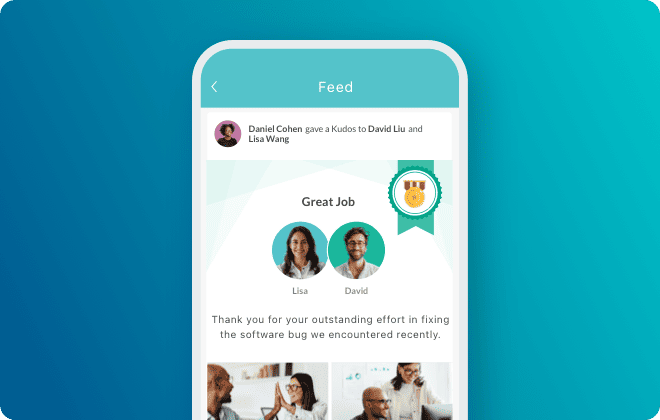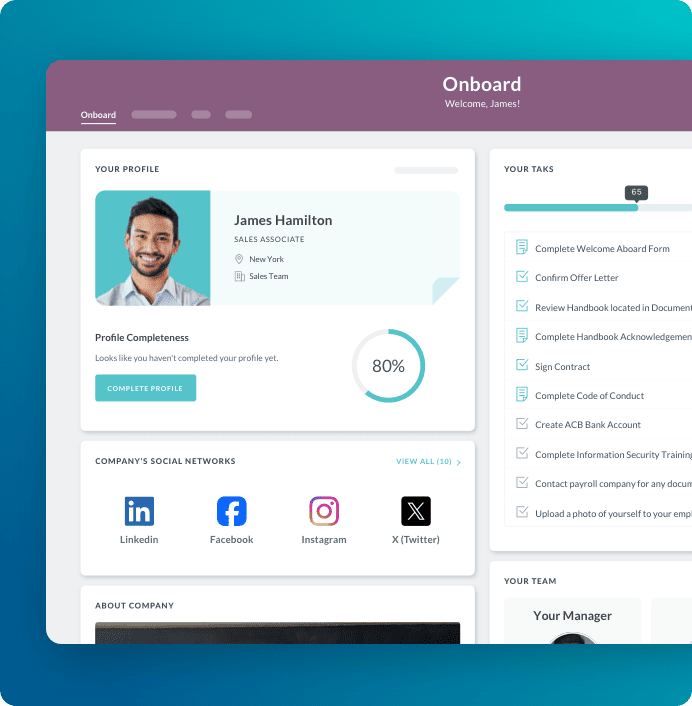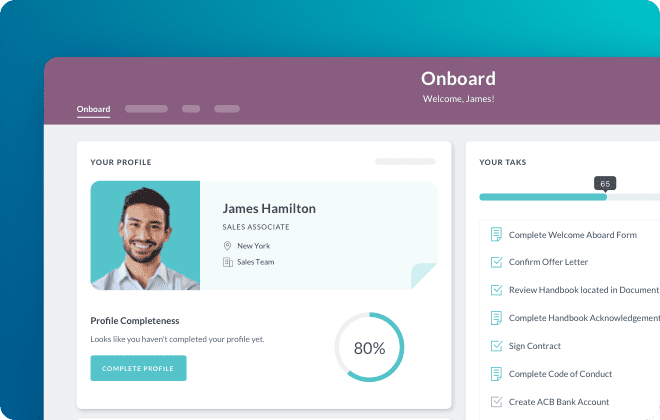

 Cut onboarding time
by 60%—here's the
Ultimate Checklist
that helped do it.
Cut onboarding time
by 60%—here's the
Ultimate Checklist
that helped do it.

Onboarding remote employees but struggling to maintain continuity? Do you find that your corporate office employees are more loyal and engaged, while those that telecommute are less satisfied and have higher exit rates? A successful onboarding program will help link your remote employee to the office by providing tools and communication to ensure accountability, productivity, and engagement.
When your new hires go through the onboarding process in person, it’s easier to assess their reactions, answer questions, and introduce them to team members who will have a great influence on their career path. However, employees who are dialing in to orientation via phone or trying to find their way through the handbook from their local coffee shop, will end up with a different experience altogether. If not onboarded correctly, remote employees are at risk of decreased involvement, engagement, and performance levels.
SHRM research shows that “half of all hourly workers leave new jobs in the first four months, and half of all senior outside hires fail within 18 months.” Knowing that new hires are at risk of exiting your organization, it’s important to consider an onboarding approach designed to connect remote employees to the office as quickly as possible.
Implementing an onboarding strategy is your key to ensuring a successful “day one and beyond” experience for your new hires. Taking it one step further and expanding to those who work remotely will not only help strengthen your efforts to instill culture and build rapport, but will help you be consistent across your organization, regardless of the location.
Instill Culture
Technology allows us to work from anywhere, anytime, which is leading to an increasing number of employees working remotely, rarely stepping foot in the corporate office. As companies gradually expand their office space outside of cubicles and brick walls, it often appears that the culture is dialed to 'generic corporate' and fails to evolve with the business. As your employees become more mobile, you recognize that the company culture must also be mobile. Therefore, immerse your new hires in your culture at the very outset.
One way to accomplish this is via remote mentorship. Pairing or grouping remote new hires with senior team members is becoming a best practice for opening the lines of communication and improving individual understanding of the team environment. This clarity can extend to organizational values, business goals, performance expectations, and so on. Be clear about deadlines, how work progress is tracked, how often team members should check in with each other and the preferred tools for communicating.
Some tools to consider, especially for remote workers, are employee engagement software and mobile HR software. Both are strong tools for all workplaces, but essential for those working outside of the workplace.
When employees feel connected to the culture, they are more willing to share that culture with fellow employees through leadership and example.
Build Rapport
It’s difficult getting to know someone in the onboarding process if your only interaction with them is through email and phone conversations. Imagine a conference call where you’re the only one calling in and there are four other people on the call, but they’re all in the same room. They get the benefit of seeing facial expressions, sharing side-bar conversations or even the ability to pass a note or place you on mute, while they talk amongst themselves. If you’ve had time to build rapport with one another, it’s more likely that you will have trust in the direction and outcome, providing you with more confidence to speak up and share your own thoughts and ideas.
Having regular meetings while onboarding remote employees via Skype or video conference will help alleviate concern and anxiety while building rapport, creating personal connections, and strengthening communication efforts.
Teams function well when they communicate often with one other; there is increased understanding and a feeling of belonging and purpose.
Be Consistent
No matter which city or time zone you’re in, the onboarding information shared across the organization should be consistent. From video tours of the home office to welcome notes from the leadership team, be consistent in the messaging with all employees. And if you’ve got one department that excels at making virtual work, ask them to mentor other virtual teams and share best practices and advice.
Organizations lose money every year through poor onboarding of new hires and newly promoted employees. In fact, U.S. and U.K. employees cost businesses an estimated $37 billion every year because they do not fully understand their jobs. The losses occur as a result of "actions taken by employees who have misunderstood or misinterpreted—or were misinformed about or lack confidence in their understanding—of company policies, business processes, job function or a combination of the three.”
Don’t let this happen to you. Be sure your employees understand their role and are therefore able to provide value to the organization.
Research from SHRM provides a valuable conclusion, “Organizations that engage in formal onboarding by implementing step-by-step programs for new employees to teach them what their roles are, what the norms of the company are and how they are to behave are more effective than those that do not.” If you have the technology, use it. Successful onboarding programs and tools will help connect remote employees (new hire or current) to the organization and better enable them to perform the job they were hired to do.
How has your organization fostered remote hire engagement in your best practices?
Have you had success in remote mentoring or something a bit less-than?
We'd love to hear your ideas, concerns and solves in the comments!
Keep Reading
Global Employee Onboarding: Creating a Seamless Experience Across Borders
In today's interconnected business landscape, companies are expanding beyond geographical
The Compliance Catch-Up: What HR Needs to Fix Before Mid-Year Audits
By May, most HR teams have settled into the rhythm of the year. But compliance? That
Secure Onboarding: Best Practices for Protecting Data with Remote Hires
The option of working from home also means that organizations can hire anyone worldwide;
Like What You Hear?
We'd love to chat with you more about how HR Cloud® can support your business's HR needs. Book Your Free Demo

See Workmates in action
Your culture upgrade starts here. Take a quick tour or book a live demo.


Cut onboarding time by 70%
See how growing teams streamline onboarding and save hours for every new hire.


